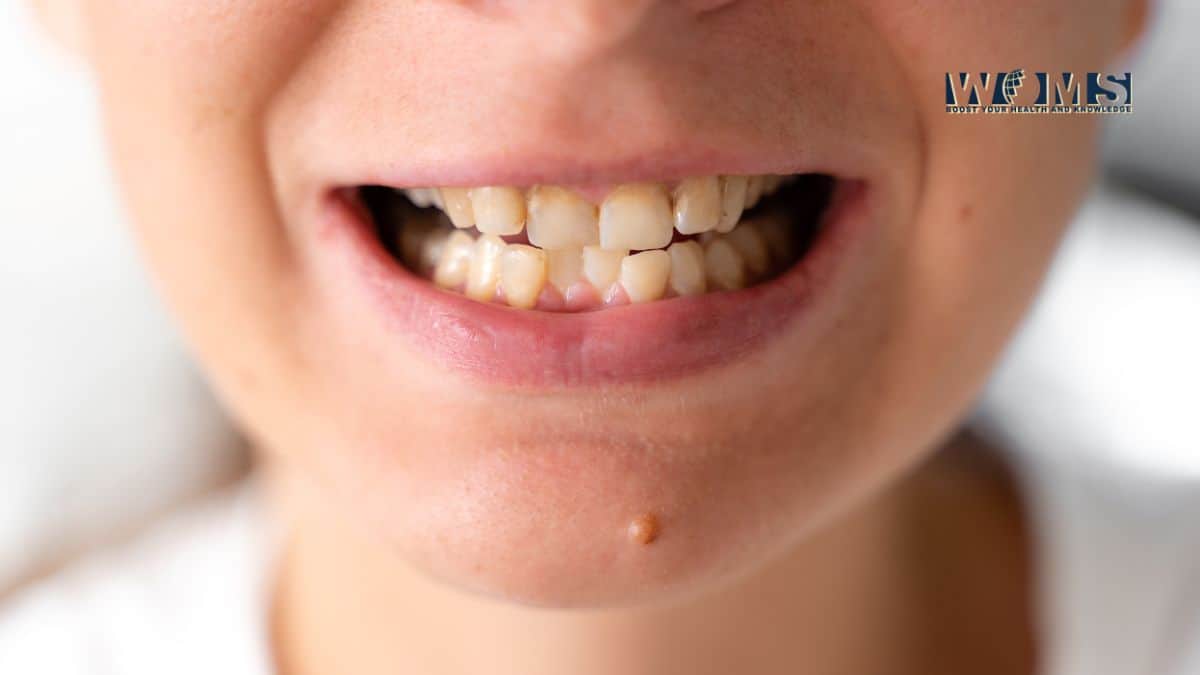8 Tips That Might Help Your Crooked Teeth

Crooked teeth or malocclusion can lower your confidence and stop you from smiling happily. Many people just hate them even when they’re not aesthetically displeasing. Moreover, crooked teeth and a misaligned jaw can cause severe health problems such as TMJ headache and gum diseases when left untreated for long. But thankfully, there are treatments such as putting braces or veneers that can fix malocclusion or misalignment of teeth.
This article covers reasons and treatment options for crooked teeth, and most importantly, how you can prevent them.
Reasons Behind Crooked Teeth
The reasons for crooked teeth can be many. Habits such as thumb or pacifier sucking, genetics, untimely loss of the baby tooth, facial injury, etc. can cause you to have crooked teeth. Knowing the reasons can help you prevent this condition.
Reasons for Crooked Teeth
- Loss of Baby Tooth – Our baby teeth are supposed to give way to our adult teeth. The premature loss of the baby teeth causes the adjacent teeth to shift in their place. This causes crooked teeth. In order to prevent this, you must take good care of baby teeth.
- Sucking Thumb – Sucking a thumb past the age of 6 or 7 can cause overbite and misalignment of teeth.
- Nail Biting – Nail biting can disrupt the natural alignment of our teeth and create crooked teeth.
- Gum Injury – Gum disease or injury can alter the natural alignment or bite over time.
- Age – The popular belief that molar teeth cause crowding of teeth at the front of the mouth is wrong. It happens because of lost bone density in the jaw.
- Not wearing retainers after taking off braces can cause crooked teeth to come back.
Why You Should Fix Crooked Teeth
Crooked teeth can cause low self-esteem in some. But aesthetics aren’t the only reason why you should fix crooked teeth.
Your teeth are supposed to fit in the jaw and on each other perfectly. This aids in chewing and keeping the gum healthy. Having crooked teeth or a misaligned jaw can cause other problems such as:
- Pain in the bone joints of the jaw.
- Infected gum.
- Food particles can get stuck in crowded teeth and create cavities.
- Misaligned jaws can badly affect the body’s posture and balance.
- Crooked teeth can develop into an overbite or an underbite.
- Difficulty in speaking can be caused by misaligned or crooked teeth.
8 Ways You Can Fix Your Crooked Teeth
Crooked teeth can be easily fixed if you’re willing to invest some time and money. Orthodontists offer a wide range of treatments that can be suitable for you in terms of money, time, aesthetics, and the severity of the problem.
1. Veneers
Veneers are some of the more popular ways to straighten crooked teeth. These are shells that adjust to the natural shape of your teeth and color to provide a pleasant look. These are not medical requirements, and even though they can have restorative effects, they are mostly cosmetic processes. There are 5 types of veneers. These are:
Porcelain Veneers
Porcelain is the most popular type of veneer available. These are long-lasting and do not cause any allergic reaction. These have a texture similar to teeth and are stain resistant. However, the enamel of the teeth has to be removed before installing these.
Composite Veneers
These are made using organic and inorganic blends of resin. These are molded on top after preparing the teeth. Composite veneers are durable and can be fixed in a single visit to the dentist. The discoloration is one of the cons of composite veneers.
Lumineers
Lumineers are thin and can be put on without preparing the teeth. These are sturdy but can chip easily. Dental Lumineers are less expensive than porcelain veneers. These are detachable but can show the discoloration of the teeth beneath.
Palatal Veneers
Palatal veneers are mainly put on the backside of your teeth. These can also be put on the molars and the premolars. Palatal veneers can be customized with any material of your choice.
Temporary Veneers
Temporary veneers come in two types. These are instant and custom-built veneers. The instant ones can be put on teeth after soaking in water for some adherence. The custom ones are made at a dental laboratory.
Temporary veneers can cause discomfort and should not be used regularly.
2. Braces
Braces are a great option to fix crooked teeth in babies and teens who still have malleable gums and jaw bones. There are several types of braces you can choose from depending on your preferences such as the ones below:
Metal Braces
Metal Braces use thin and soft metal wires with brackets and bands to fix the misalignment of teeth. Metal braces are suitable for serious issues of misalignment. Headgear is used with metal braces in some cases.
Furthermore, metal braces have evolved these days. They’re not as uncomfortable as they were before. The brackets have become smaller and less metal is used. You have options to select colorful rubber bands that match your personality.
Metal braces can cost from $3k to upwards of $7k depending on your requirements and insurance.
Ceramic Braces
Ceramic braces are similar to metal braces in function and results. The only difference is that ceramic braces have clear wires and the brackets match your natural teeth color.
The brackets of ceramic braces are prone to breakage and can get stained. These are costlier than metal braces with a price tag ranging from $3.5k to $8k.
3. Invisalign
Invisalign are clear plastic aligners that are put on top of the teeth and are replaced every two months. Invisalign is custom-made to fit perfectly over your teeth. These cannot be used for severe malocclusion and should only be used by teens and adults.
Invisalign takes a long time to fix teeth and is more expensive than the other options. This is, however, more comfortable than traditional braces. You don’t have to face any eating restrictions with Invisalign and keeping these clean is also easier.
4. Lingual Braces
Lingual braces are like the usual braces but these are put behind your teeth. These are invisible and can be used by anyone who doesn’t want their braces to show. Lingual braces are effective and can be used to fix underbites and overbites.
Unlike traditional braces, lingual braces can be altered in shape to match the needs and shape of each tooth. Cleaning the teeth is tricky with lingual braces on since they can pop off easily due to pressure.
Lingual braces can be uncomfortable because they irritate the tongue and the soft tissue at the back of the mouth. They are also expensive and require expert handling during installation. You may also get lisp and speech discomfort while using lingual braces.
5. Retainers
Retainers prevent teeth from relapsing after taking off the braces. There are several types of retainers. Retainers must be used for a few months after taking off braces.
Lingual retainers are permanent and cannot be taken off for brushing or flossing. Hawley retainers are made of wires and can be taken off. Clear plastic retainers are thin and may be more comfortable than linguals.
6. Crowns
Crowns are like caps that cover a broken or damaged tooth. There are several types of material that can be used to make crowns for your teeth.
- Metal Crown – You can use gold, chromium, palladium, or nickel as material for your metal crown. These are long-lasting, strong, and do not require too much preparation for the tooth.
- Porcelain Fused Metal – This type has a metal core and is lined with porcelain. These are durable but can cause slight damage to the teeth opposite to them.
- Porcelain Crowns – These offer good color matches and relief for people with metal allergies. These are not as strong as the above two types.
- Resin Crown – Resins are not as durable as the above ones but are less expensive.
- Pressed Ceramic – These have a porcelain cap on them to match the color of teeth and are more durable than all-porcelain crowns.
7. Bonding
Dental bonding uses a material that can be molded to hide and color match the misaligned teeth. This is a cost-effective method and can be used to fix minor orthodontic issues such as teeth gap, also known as diastema.
8. Surgery
Teeth alignment surgery can reduce the time you need to fix your crooked teeth with the help of braces. Surgery can be recommended by your doctor depending on your requirements.
You can do a full jaw surgery or target specific teeth that need to be fixed.
The jaw realigning procedure is known as orthognathic surgery. It can fix severe problems where you have discomfort chewing or speaking.
Benefits of Having Aligned Teeth
Good teeth that align properly can have many benefits aside from looking good. You can get a straight smile that will boost your confidence. This will also –
- Prevent any face, jaw, neck, or back pain due to overbite or underbite.
- Periodontal problems can be prevented.
- You can clean and floss your teeth easily. Better oral health.
- Teeth don’t get damaged by clashing with each other.
- Better chewing and fewer indigestion problems.
- Lowers the possibility of teeth getting damaged in an accident.
Conclusion
Having crooked teeth is not the end of the world. This is an issue that can be easily fixed in multiple ways. There are many treatment options you can choose from after consulting with an orthodontist.
Don’t let the crookedness of your teeth put you down. Hopefully, this article will guide you to decide on a treatment.




